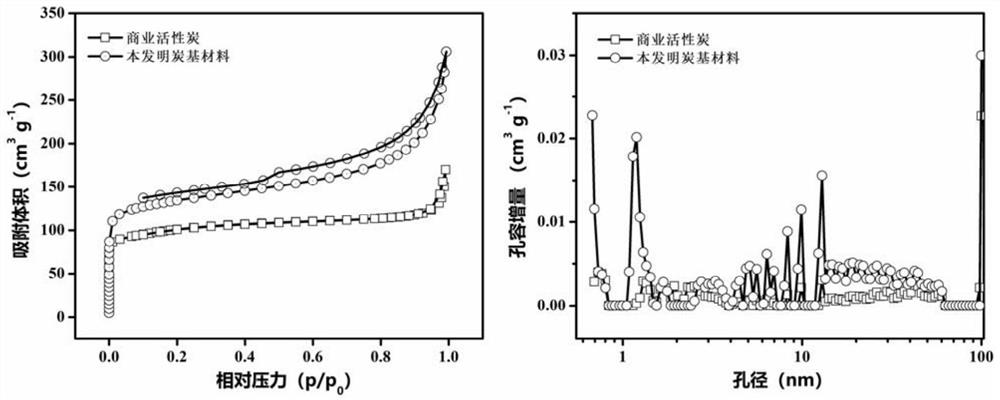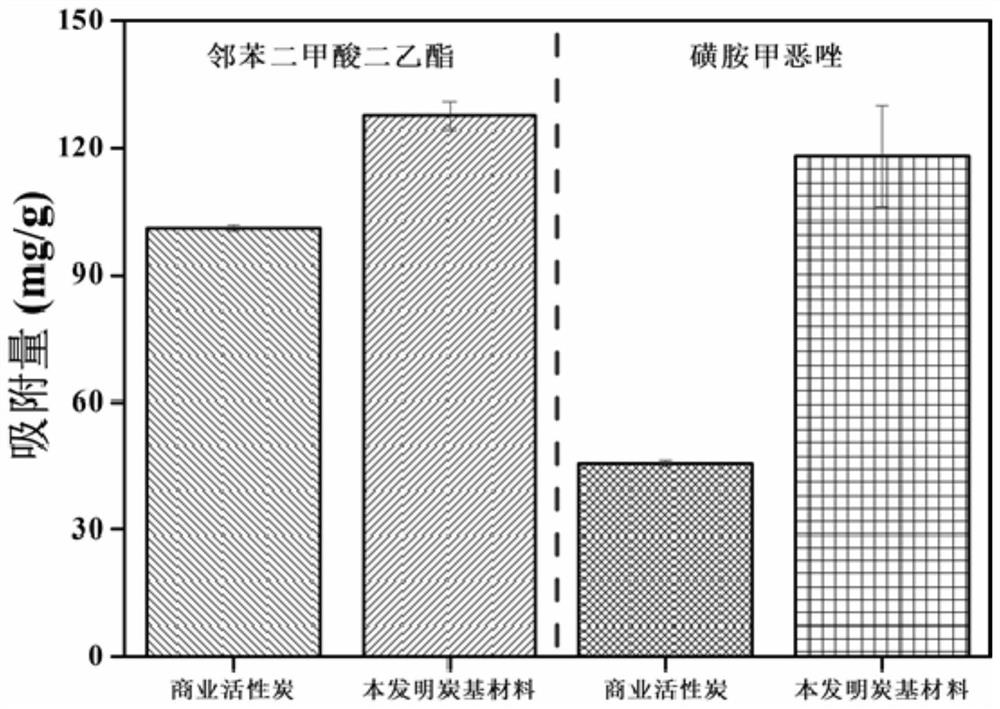A kind of method, product and application of alkali residue recycling
A technology of recycling and alkali slag, which is applied in the field of solid waste recycling, can solve the problems of unfriendly production process, impact on application, high price, etc., and achieve the avoidance of secondary environmental pollution, excellent quality transmission channels, and high-efficiency resources the effect of
- Summary
- Abstract
- Description
- Claims
- Application Information
AI Technical Summary
Problems solved by technology
Method used
Image
Examples
Embodiment 1
[0047] The method for recycling alkali residues provided by the present embodiment comprises the following steps:
[0048] Alkali residue and agricultural, forestry and animal husbandry biomass corncob are respectively placed at 110 ° C for drying, and crushed to prepare alkali residue powder and agricultural, forestry and animal husbandry biomass powder. ratio 2:1) to obtain a mixture. The mixture was placed in a corundum crucible, placed in a tubular muffle furnace, heated to 900°C at a rate of 5°C / min, held for 1 h, and then cooled to room temperature, with a nitrogen flow rate of 300mL / min throughout the process, and the ash was removed. The black residue was crushed and placed in a beaker. Use hydrochloric acid solution, ultrapure water, sodium carbonate solution, hydrochloric acid solution, hydrofluoric acid solution, ultrapure water successively for cleaning, specifically: filter cleaning by heating and stirring mode in the cleaning process, the hydrochloric acid solut...
Embodiment 2
[0052] The method for recycling alkali residues provided by the present embodiment comprises the following steps:
[0053] The alkali slag and agricultural, forestry and animal husbandry biomass sawdust were placed at 110 ° C for drying, and crushed to prepare alkali residue powder and agricultural, forestry and animal husbandry biomass powder. 0.5:1) to obtain a mixture. Put the mixture in a corundum crucible, then put the corundum crucible into a tubular muffle furnace, heat up to 800°C at a rate of 1°C / min, hold for 0.5h, and then cool down to room temperature, with a nitrogen flow rate of 400mL / min throughout the process , take out the gray-black residue and pulverize it and place it in a beaker. Use hydrochloric acid solution, ultrapure water, sodium carbonate solution, hydrochloric acid solution, hydrofluoric acid solution, ultrapure water successively for cleaning, specifically: filter cleaning by heating and stirring mode in the cleaning process, the hydrochloric acid...
Embodiment 3
[0055] The method for recycling alkali residues provided by the present embodiment comprises the following steps:
[0056] The alkali residue and agricultural, forestry and animal husbandry biomass corncob are respectively placed at 110 ° C to be dried and crushed to prepare alkali residue powder and agricultural, forestry and animal husbandry biomass powder. 3:1) to obtain a mixture. The mixture was placed in a corundum crucible, and then the corundum crucible was placed in a tubular muffle furnace, heated to 600°C at a rate of 10°C / min, held for 5 hours, and then cooled to room temperature, with a nitrogen flow rate of 50mL / min throughout the process. Take out the gray-black residue and pulverize it and place it in a beaker. Use hydrochloric acid solution, ultrapure water, sodium carbonate solution, hydrochloric acid solution, hydrofluoric acid solution, ultrapure water successively for cleaning, specifically: filter cleaning by heating and stirring mode in the cleaning pro...
PUM
| Property | Measurement | Unit |
|---|---|---|
| specific surface area | aaaaa | aaaaa |
| pore size | aaaaa | aaaaa |
| specific surface area | aaaaa | aaaaa |
Abstract
Description
Claims
Application Information
 Login to View More
Login to View More - R&D
- Intellectual Property
- Life Sciences
- Materials
- Tech Scout
- Unparalleled Data Quality
- Higher Quality Content
- 60% Fewer Hallucinations
Browse by: Latest US Patents, China's latest patents, Technical Efficacy Thesaurus, Application Domain, Technology Topic, Popular Technical Reports.
© 2025 PatSnap. All rights reserved.Legal|Privacy policy|Modern Slavery Act Transparency Statement|Sitemap|About US| Contact US: help@patsnap.com


